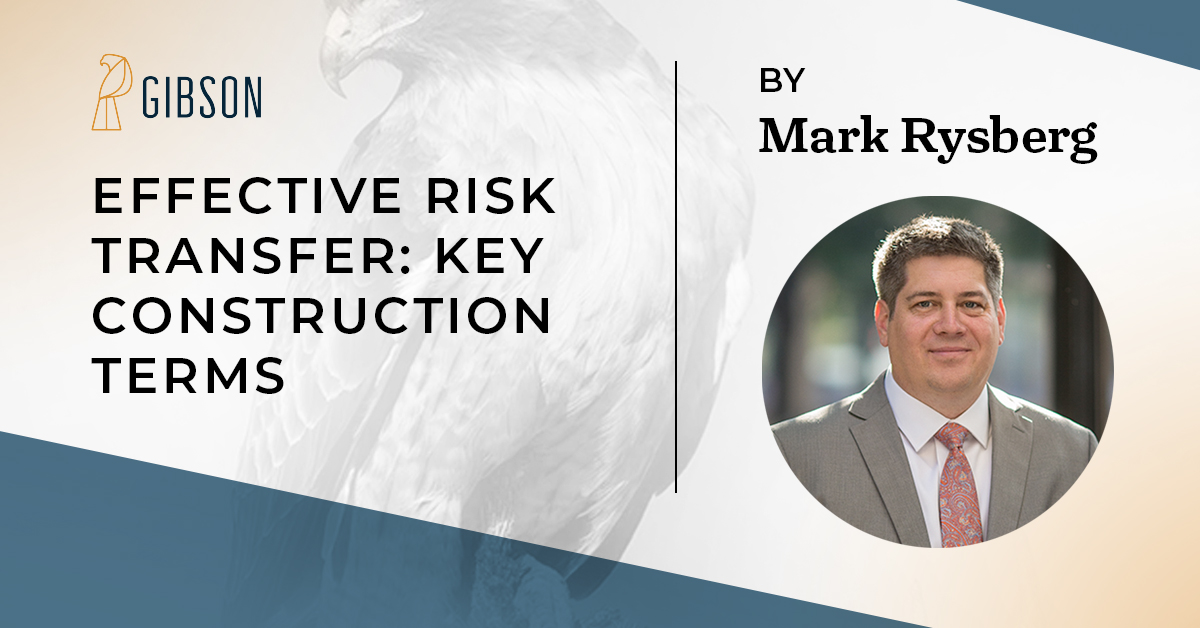

Linda Stowell, CFO of Aero Metals


Written by: Gregory M. Hart, ARM, CHSP, CIC, CRM, ALCM,
Unison Risk Solutions


Construction industry participants face exposure to risks arising from the professional services that are required to design and construct a particular project. Professional liability insurance is a common tool used by contractors and designers to transfer risks from errors and omissions in the provision of professional services to third party insurers in exchange for payment of the policy premium. For design professionals these policies provide coverage for losses arising out of errors and omissions in professional design services such as those that result in the development of plans and specifications, as well as those arising from defective contract administration and consulting. Contractors purchase these policies to provide coverage largely to cover exposures from defective construction management.


The term “risk transfer” means just that: a risk that one party bears is transferred to another. In reality, risk transfer in the context of a contractual transfer of risk from an insured to an insurer is better understood as a transfer of the financial costs of certain risks. For example, if a subcontractor injures a third-party or damages their property, the subcontractor’s commercial general liability policy should provide the subcontractor with defense and indemnification coverage. In other words, the financial cost of a covered risk is transferred from the insured to its insurance carrier. The ability to finance the costs of potential risks is a key tool in how most construction contracts are structured. Here is how.

 According to the National Safety Council, the use of a cell phone while driving causes an estimated 1.6 million accidents each year. In 2018 alone, 4,637 people died in a car accident due to cell phone use. 14% of fatal crashes involved cell phones. Distracted driving is an epidemic.
According to the National Safety Council, the use of a cell phone while driving causes an estimated 1.6 million accidents each year. In 2018 alone, 4,637 people died in a car accident due to cell phone use. 14% of fatal crashes involved cell phones. Distracted driving is an epidemic.
Starting July 1, 2020, there will be a new Indiana State Law for distracted driving. This bill will extend the 2011 ban of texting while driving to banning all physical use of a cell phone unless using hands-free technology. We encourage you to take a little extra time to consider the dangers of distracted driving and get to know the laws for distracted driving in your state.

 In this article originally published by Gibson's Loss Prevention Manager, Gary Clark, we explore best practices for staying safe during the cold winter months. With the cold weather, winter brings a slew of workplace safety hazards. From proper attire to snow removal and slippery surfaces, you should be thinking about how the cold weather impacts your employees. How can you protect them from the cold this winter?
In this article originally published by Gibson's Loss Prevention Manager, Gary Clark, we explore best practices for staying safe during the cold winter months. With the cold weather, winter brings a slew of workplace safety hazards. From proper attire to snow removal and slippery surfaces, you should be thinking about how the cold weather impacts your employees. How can you protect them from the cold this winter?
Consider the following tips to keep your workforce prepared and protected:

 Looking for ways to educate and engage your employees on safety & health topics throughout the year? Check out our 2020 Safety & Health Calendar.
Looking for ways to educate and engage your employees on safety & health topics throughout the year? Check out our 2020 Safety & Health Calendar.
Workplace safety and wellbeing should be a top priority for leadership and employees. But how can you keep your employees engaged all year long? For every organization the approach is different – you could have a safety committee, newsletters, monthly training sessions, and more. The 2020 Safety & Health Calendar is a valuable tool you can utilize to make your efforts more effective.


The holiday season is upon us once more! 'Tis the season for family and giving, festive decorations, social gatherings and office parties, tasty sweets, family meals, shopping, and more.
With so many jolly activities to participate in, it's important to make sure you, your loved ones, and your organization are safe and healthy this holiday season. Consider the following resources to get you ready for the holidays!